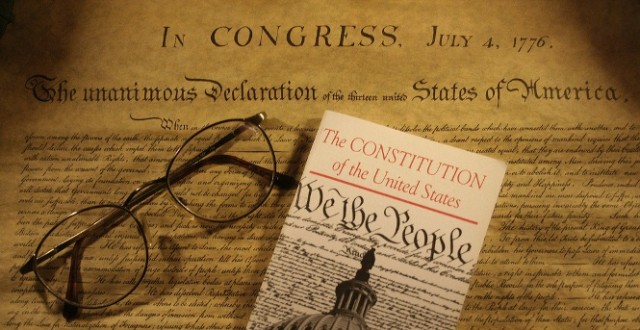PODCAST: Understanding the Constitution

The Constitution of the United States is the supreme law of the land. Its importance cannot be overemphasized. It is what politicians, military personnel, law enforcement, judges, federal employees, and legal immigrants are sworn to uphold, e.g., “…and will to the best of my ability, preserve, protect and defend the Constitution of the United States. So help me God.” It was created in 1787, ratified in 1788, and made effective in 1789. Since then it has become the model by which other countries have re-invented their government.
The first three words of the Constitution are, “We the people,” to indicate it was written to serve the interests of the people of the country, not a monarch or dictator.
The Constitution was produced by the second Continental Congress, but was preceded in 1781 by the Articles of Confederation, the first true constitution of the country. The weakness in this document was the lack of a strong central government, giving more power to the states instead.
Construction
There are essentially two parts to the Constitution:
- The Main Body – specifying the mechanisms of the government.
- Amendments – specifying the rights and freedoms enjoyed by the people, and changes made to the Main Body. The first ten amendments are referred to as “The Bill of Rights.” This was a clean way to separate the two parts of the Constitution, thereby making it easier to ratify the overall document. Whereas there have been some changes made to the Main Body, the Amendments have changed more frequently over the years. There have been 27 Amendments made to the Constitution, with the 21st used to repeal prohibition (the 18th amendment).
The Main Body defines the responsibilities of the three “separate but equal” branches of government:
- The Executive Branch – as represented by the office of the President, along with the various agencies and departments controlled by the President’s cabinet.
- The Judicial Branch – representing the Supreme Court and lower federal courts.
- The Legislative Branch – represented by the Congress and responsible for passing laws in conformance to the Constitution. Interestingly, the Congress is referred to as “bicameral,” meaning there are two separate chambers; the House of Representatives (the lower House), and the Senate (the Upper House). Whereas the House is generally regarded as lawmakers from all walks of life, the Senators are typically senior politicians who offer advice and confirm presidential appointments.
These three branches offer “Checks and balances” over each other so one branch doesn’t become stronger than the others. For example, The Executive Branch nominates judges for the Supreme Court and lower courts, but the nominees must be approved by the Senate. The Senate must also approve the President’s nominees for cabinet secretaries, ambassadors, military leaders, and other agency appointments. Without this approval, the people cannot serve.
The Congress may pass laws, but the Supreme Court ultimately determines if the legislation conforms to the Constitution. If it does not, it can be dismissed.
The Congress must secure the President’s signature to enact legislation. Without the signature, the legislation is “vetoed” from being placed into law. The Congress can overturn the President’s veto by securing a 2/3 percent vote in both chambers of Congress. This is difficult to do, but has been done.
This is but a small sampling of the “checks and balances” at play in the Constitution. There are many more. Nothing like these “checks and balances” had been tried before. All of this is a a testament to the brilliance of the founding fathers who devised the Constitution. It is hard to imagine a team of lawyers in today’s world who could produce such a document with such eloquence and conciseness.
Ratifying the Constitution became a problem as antagonists challenged many clauses within the document. To overcome this problem, a series of articles were produced and distributed by newspapers throughout the country explaining the virtues of the various parts of the document. This was referred to as “The Federalist Papers” and written by James Madison (later to become the 4th President of the United States), Alexander Hamilton (later to become the 1st U.S. Treasury Secretary), and John Jay (later to become 1st Chief Justice of the Supreme Court), all under the pseudonym “Publius.”
The Constitution has been with us for well over 200 years and has withstood the test of time. Is it perfect? Of course not, there are some items that should be revisited, such as term limits for politicians, a balanced budget, changing the length of our electoral process, and more. But overall, the Constitution has served us well.
It is genius. Sheer genius.
Keep the Faith!
P.S. – Also do not forget my books, “How to Run a Nonprofit” and “Tim’s Senior Moments”, both available in Printed and eBook form.
EDITORS NOTE: This Bryce is Right podcast and column are republished with permission. © All rights reserved. All trademarks both marked and unmarked belong to their respective companies.


Leave a Reply
Want to join the discussion?Feel free to contribute!